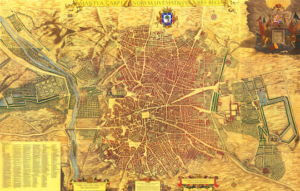There are 11.7 million hectares of productive olive trees planted in the world, distributed in 66 countries, in the five continents.
However, in addition to olive trees dedicated to the production of olive oil or table olives, there are also countless specimens dedicated to ornamentation.
They are leafy trees and have a slow growth, not exceeding ten meters in height. One of its main characteristics is that it is a very long-lived tree with a great capacity for regeneration. Its use in gardening is mainly due to the ease with which it can be transplanted in its adult age, normally as an isolated specimen.
As an example of its presence as an ornamental element in Madrid, there are specimens from Martos (Jaén) in the Plaza de Colón, in the gardens next to the motifs of the commemoration of the discovery of America, also in the Plaza de España or in the Palacio de la Moncloa, where three olive trees were installed at the beginning of the 80s. We can also find olive trees in the park of El Retiro, located on the hill of the Bosque del Recuerdo; also, near the site and next to an estuary, is the largest olive tree in the park. There are also olive trees in the Antiguo Reservado area, in the gardens of Cecilio Rodriguez and in the Artificial Mountain.
The presence of the olive tree in the Retiro is not casual, already in the well-known Texeira’s Plan of 1656, it is appreciated that around the current Basilica of Atocha was the known as Olivar de Atocha. The kings could enter directly from El Retiro to the olive grove and the Virgin of Atocha.
The Environment and Mobility Area has recently acquired a centenary olive tree after joining the initiative ‘A Tree for Europe’, of the youth association Equipo Europa, which has the support of the Office of the European Parliament in Spain and which, from 2021, has been extended to the entire continent.
For this initiative, the Buen Retiro gardens have a centenary olive tree planted in one of the meadows near the entrance of the Puerta del Ángel Caído. It is estimated to be 627 years old, with an approximate date of origin in 1396. The new tenant weighs five tons, is about three meters tall and its trunk has a diameter of approximately three meters. Despite its modest dimensions in comparison with other larger trees, it has become the oldest specimen that adorns the Madrid park, surpassing in age the historic ahuehuete located at the entrance to the garden through the Felipe IV gate.

